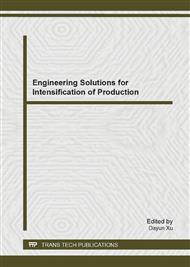p.70
p.76
p.82
p.88
p.95
p.101
p.105
p.111
p.121
Study of the Relationship between Tool Wear and Surface Finish in Turning with Carbide Tool
Abstract:
The aim of this work is to analyze the tool wear effects on surface finish of machined components. Long-term machinability tests were performed for ASTM 1040 and 1045 carbon steels with carbide tools, in which tool wear and surface roughness were periodically evaluated. Surface finish was analyzed as a function of processed material and cutting speed with new machining tool, and a significant influence was found for cutting speed at a confidence interval of 10%. When evaluated as a function of time and tool wear, surface roughness showed an exponential relationship with both variables. However, a high dispersion occurs close to the end of tool life, especially for AISI 1040 steel. Weak influence of cutting speed (for the range of speeds tested) was observed on the relationship between tool wear and surface finish, indicating that a single equation can describe its behavior for all studied conditions. The relationship between the surface roughness and the cutting time was found to be stronger for the ABNT 1040 steel.
Info:
Periodical:
Pages:
95-100
Citation:
Online since:
February 2014
Authors:
Keywords:
Price:
Сopyright:
© 2014 Trans Tech Publications Ltd. All Rights Reserved
Share:
Citation:


